How to spend it in . . . Batroun, north Lebanon
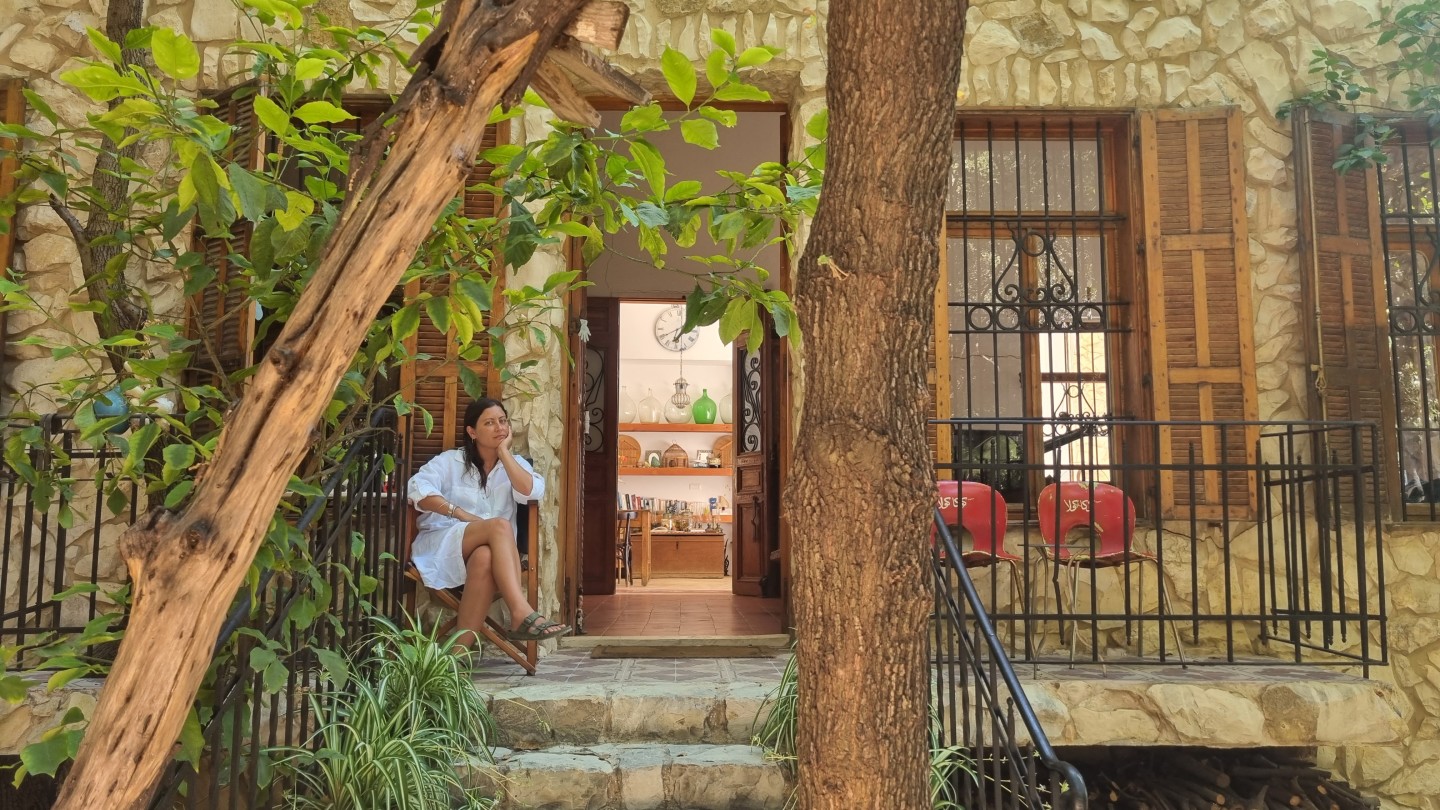
Roula Khalaf, Editor of the FT, selects her favourite stories in this weekly newsletter.
My family is Lebanese but lived abroad because of the civil war, then moved back in 1992, a little after it ended. About 10 years later, my mother bought a plot of land in the then sleepy town of Batroun, along the north Lebanese coast. She had been holding on to a dream, which began when she experienced B&Bs in the UK, to open a guesthouse of her own. Beit al Batroun (“House of Batroun”) opened in 2013 with just three rooms – there are five now. Since then, guesthouses in Lebanon have multiplied, a lot of them adopting the “beit” moniker, but she effectively started that trend.
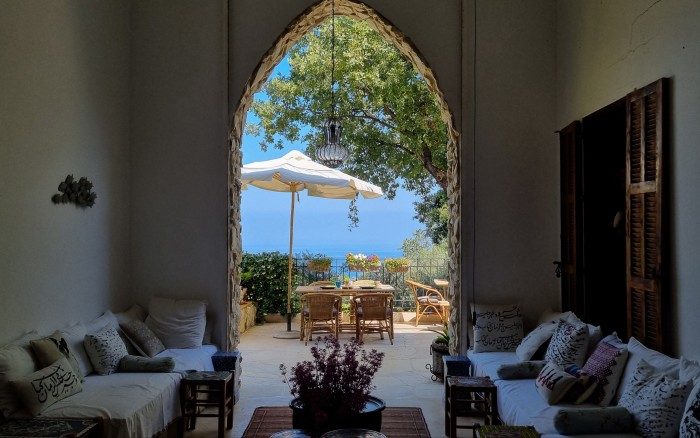
Now, if I go home to visit family it’s Beirut in winter, when the guesthouse is closed up, but the rest of the time it’s Batroun. The place my mum created feels supremely welcoming and comfortable – the house is built in the traditional Lebanese style around a central liwan, an open space fronted by two arcades. She’s a sociable host, and we often have drinks with guests in the common areas so you meet new people every day. Arriving there gives me an instant feeling of utter peace, even though the town is now bustling, and starting to catch up with its neighbour to the south, Byblos.
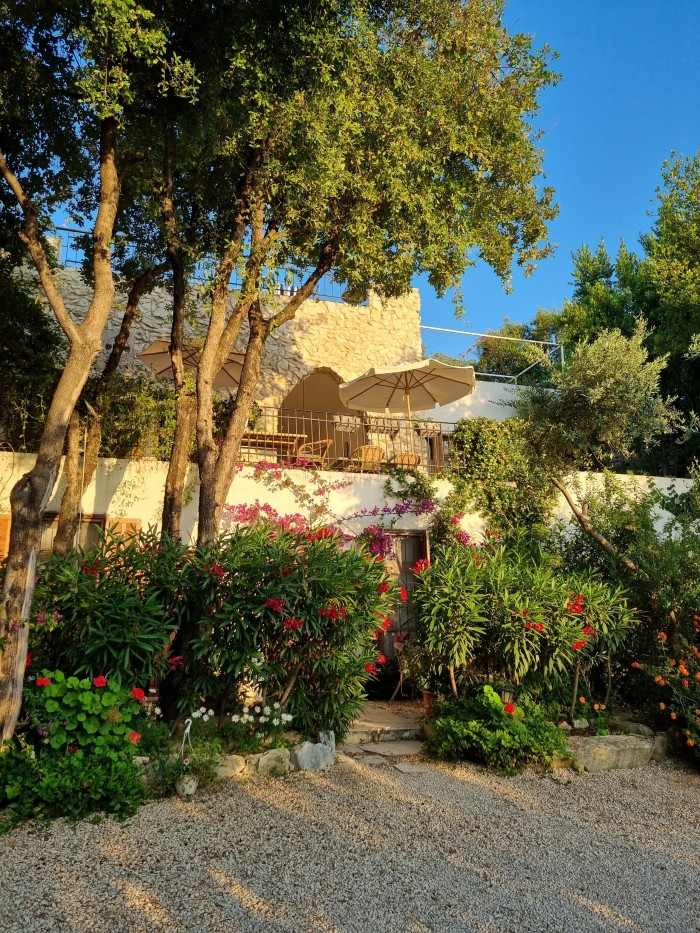
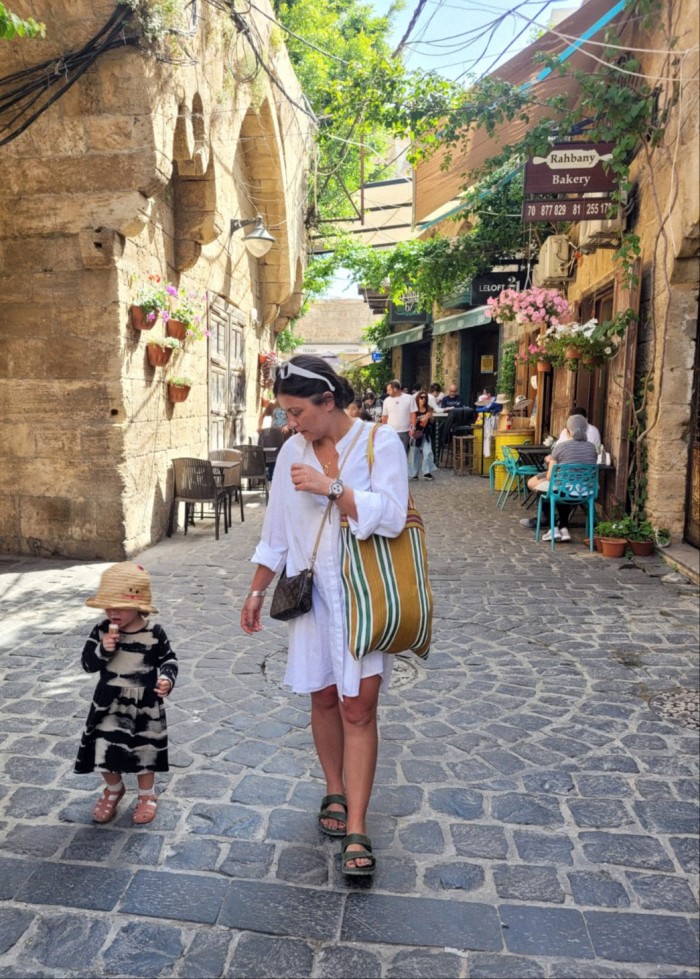
Batroun has become the new place to be despite how debilitating the country’s financial crisis has been. It’s verdant, with lots of Levantine architecture – beautifully restored stone-faced houses with painted shutters and balconies flanked by bougainvillaea flowers in bright reds and pinks. I think people need that escape. When you arrive it’s like nothing’s happened – there are buzzing restaurants, bars and beach clubs. The Lebanese are renowned for their perseverance. We get on with life even though things around might be crumbling.
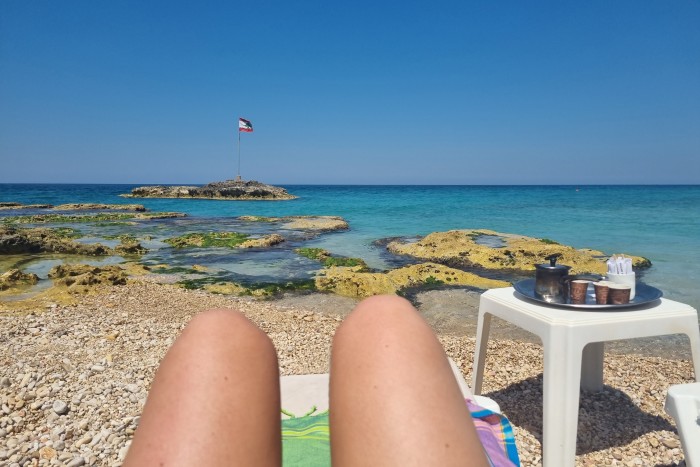
In the mornings I’ll hit White Beach, the same beach I’ve been going to for 10 years. It’s really no frills, just a pebble shore with plastic sun loungers and a restaurant in a basic concrete building. The sea is really easy to get into – there’s a tiny bit of sand and then you’re in deep, clear blue water. The restaurant is owned and run by siblings, with the freshest of fish and great service. If I get there before 11am I’ll have a super strong Turkish coffee. If it’s post-11am, I’ll get a beer – an Almaza, the traditional Lebanese beer, or a Colonel, locally brewed in Batroun. Here’s the routine: you get your little table and are served the beer alongside carrot sticks in lemon juice and my favourite snack, termos, a small plate of lupin beans soaked in water with salt on top. I’ll just sit there in the hot sun, nothing but blue in front of me and the sound of the sea. Two hours like that and all the stress is washed away. It sets me up for the rest of the trip.
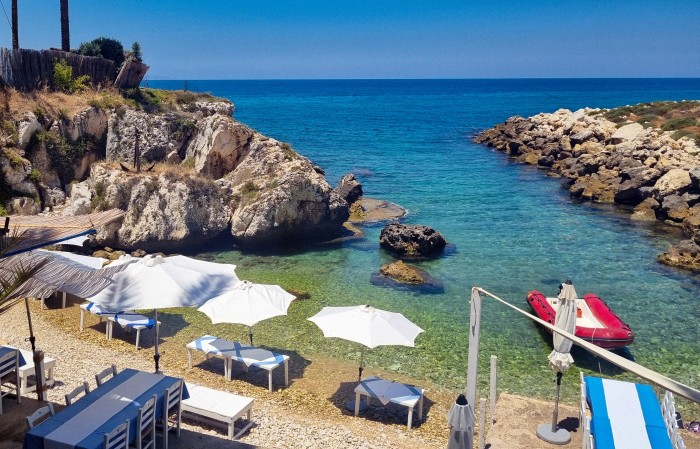
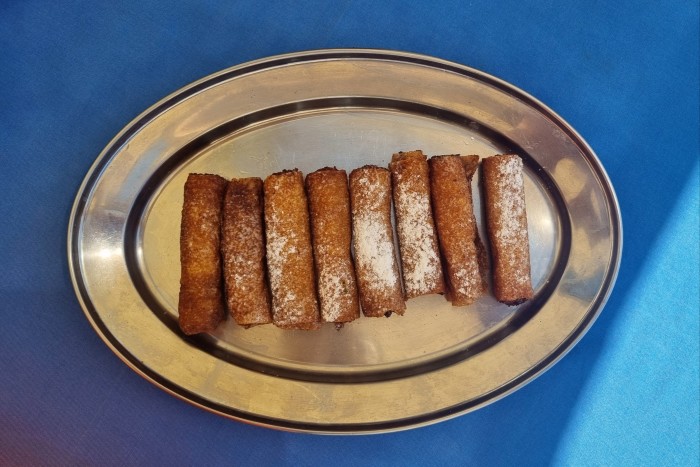
You cannot visit Batroun without going to Jammal restaurant. It’s an institution – you have to book in advance as it’s so popular. The restaurant is in its own small cove, right on the seafront. You go in your swimsuit as some of their tables are in the sea and you can be up to your knees in water while eating fresh fish. We had the usual this year, a starter of kabis malfouf – pickled cabbage leaves stuffed with nuts – grilled whiting fish and raheb, a dish of charcoal-grilled aubergine. And there’s a moreish dessert, tamrieh – deep-fried rolls of filo pastry with a delicious, creamy semolina filling, dusted with sugar.
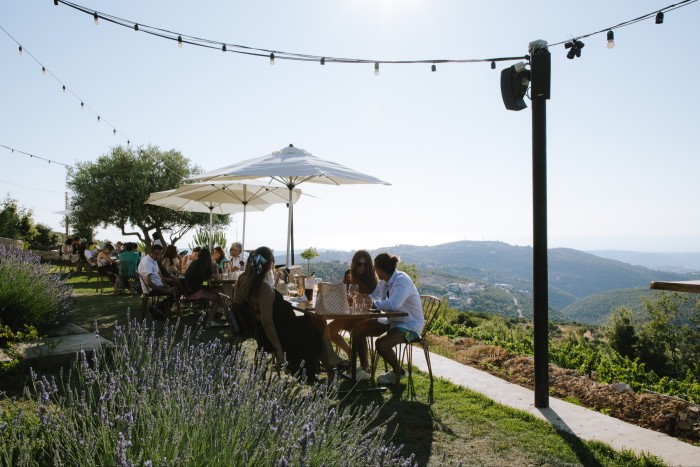
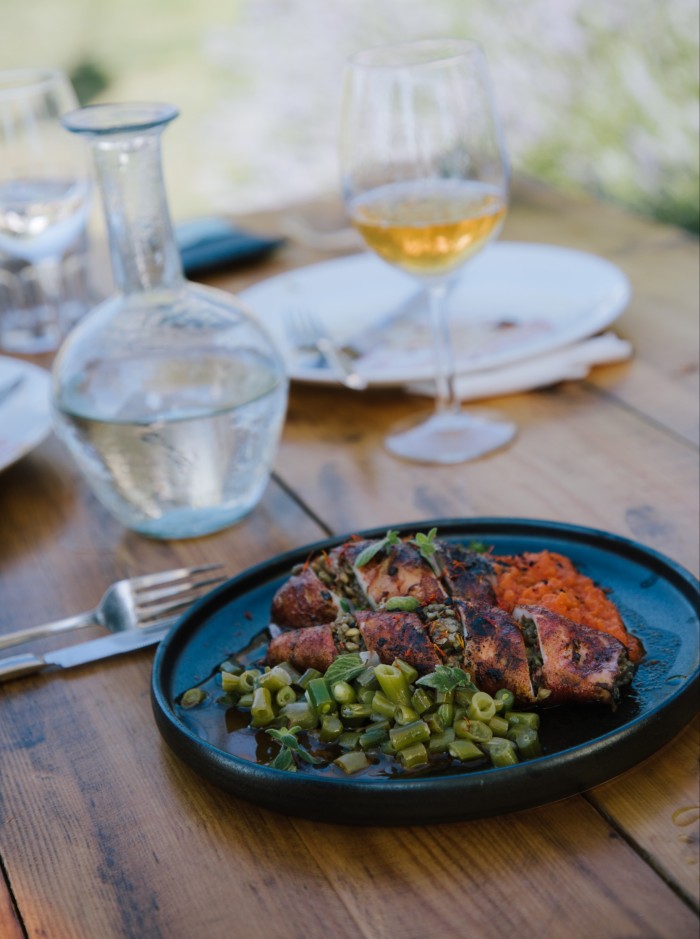
You can also get lunch along what’s called “La Route des Vins” – the whole mountainscape around Batroun is full of wineries that do tastings and a lot of them offer food too. For me the best are Ixsir, which has beautiful grounds, and Atibaia, whose wines my aunt’s husband stocks up on when he comes to Lebanon. He’s a serious wine aficionado and says it’s one of the best he’s tried. One of my favourites involves a drive quite high up in the mountains. It’s called Sept, and it’s run by a young couple who have created La Table de Sept, a small lunchtime restaurant with breathtaking views. It’s about 950m up and it feels like you’re sitting on top of the world. There are a limited number of tables, which makes it very intimate, a sort of table d’hôte with a set menu paired with their own wines.
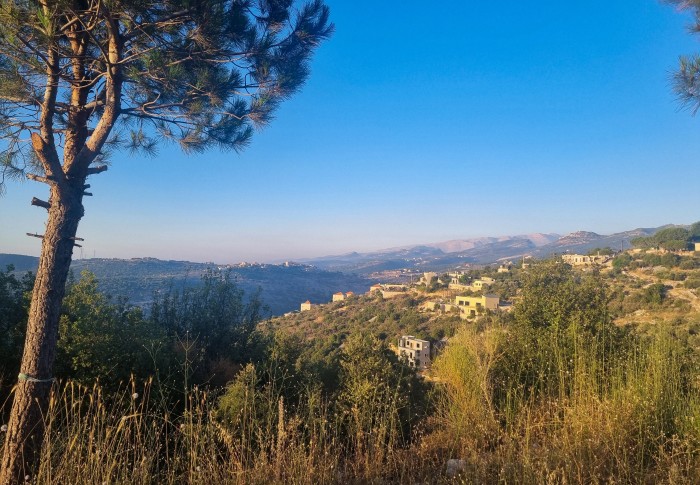
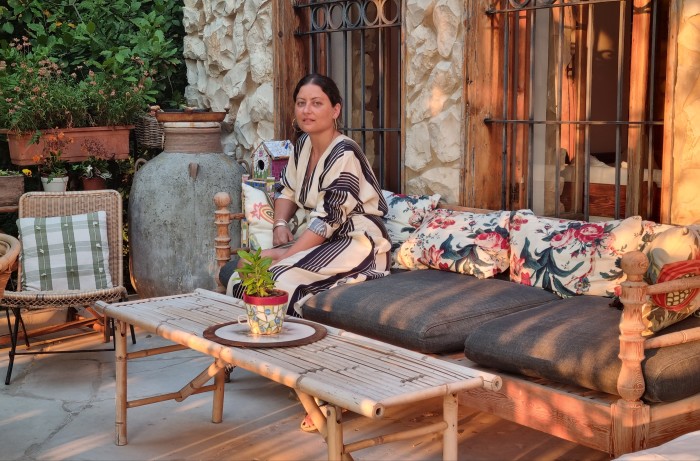
I always buy arak – Lebanon’s aniseed-flavoured alcohol – when I’m home. Coteaux de Botrys does a delicious one called Arak Kfifane. And I’ll get spices by Batrouniyat, or one of the artisan bakers and grocers you’ll find in the winding, cobbled roads of the old town. Then I can make my man’ouche, the traditional Lebanese breakfast of flatbread topped with za’atar – a thyme, oregano and sesame-seed paste. If you mix za’atar with lots of olive oil, you’ve got the taste of Lebanon.
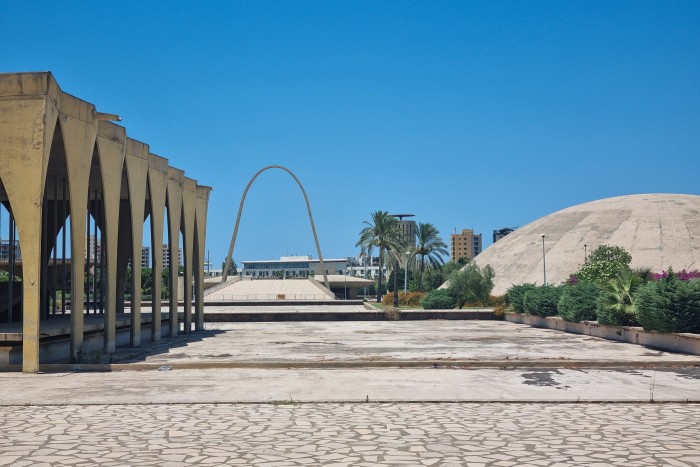
To get my culture fix, I’ll head up the Rachana mountain road to see the work of sculptor Anachar Basbous, who built a museum for his work. You can spot his sculptures from the road too – it’s part of the landscape. And a must for architecture fans is a half-hour drive north to the outskirts of Tripoli to see the Rachid Karami International Fair, designed by Oscar Niemeyer but left uncompleted in 1975 after the civil war began. It’s supposed to be closed to the public but they allow curious tourists in to these massive grounds with sprawling gardens and unfinished architectural structures. It’s a beautiful modern ruin.
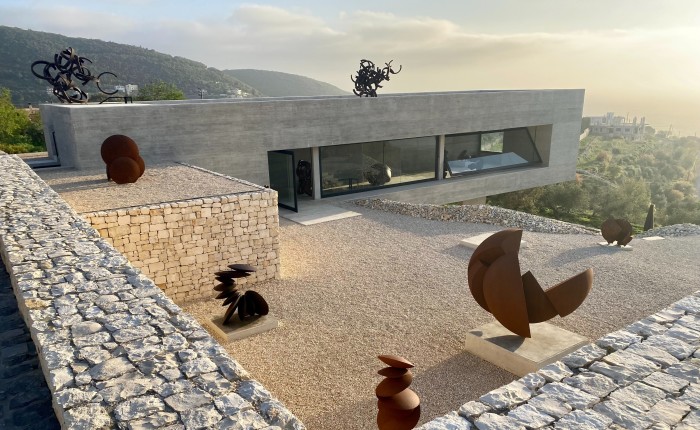
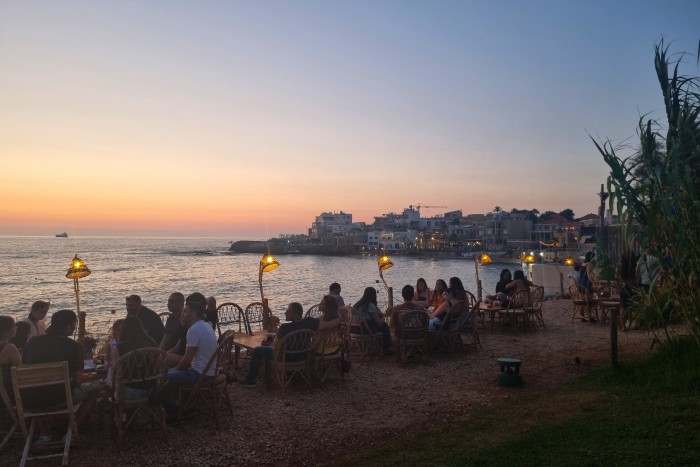
I like to end the day with sunset drinks at Bolero. I’ll sit at a low table with a rosemary cocktail and watch the sunset over the sea. Last time I went, the whole sky went these insane tones of bright to pale pink with turquoise blues. You keep snapping pictures, but it never quite captures what’s right there in front of you.
Comments